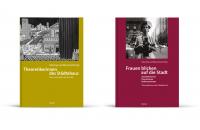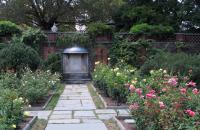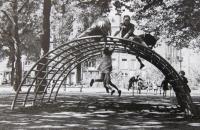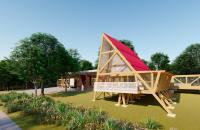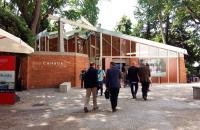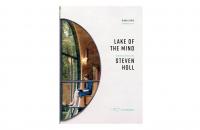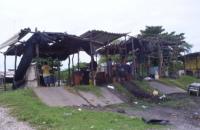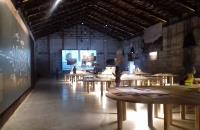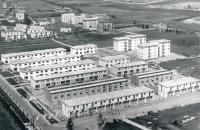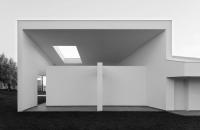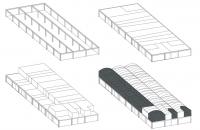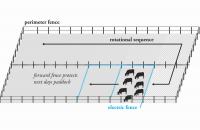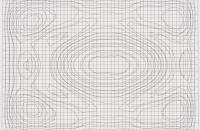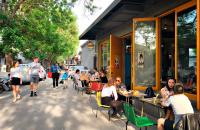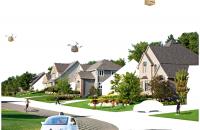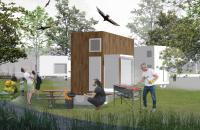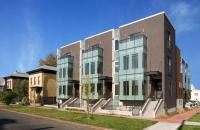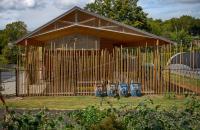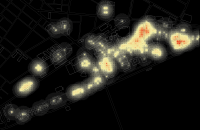Professor in Residence, Department of Architecture, GSD, Harvard University, Cambridge MA, USA
Where Are the Lesbian Architects? Visibility and Its Challenges
VOLUME 4/2019 - Issue 2 [GENDER MATTERS], Pages: 327 - 343 published: 2020-01-16Until recently, discussions of the relation of sexual orientation with the built environment have mostly focused on gay men at the expense of lesbian women and trans people. This study thus presents a review of discourses in architecture and design as well as interviews with lesbian designers to understand how and why queer women have been almost invisible. The privileged position of men allows expression of their sexual orientation with less risk than women who are already facing discrimination. Furthermore, structural inequities have forced women architects to focus on issues of equality and inclusion for all women, with the side effect of often silencing how other forces such as sexual orientation or race combine to create more complex power relations. Invisibility is a problem, however, as it limits the ability to respond adequately to diverse social needs and to sustain more inclusive design disciplines. Bringing to the foreground the intersection of identities with experience of space can encourage younger generations of architects by offering role models and diversifying the range of life experiences informing the design of spaces.
Sibyl Moholy-Nagy: Architecture, Modernism and Its Discontents
VOLUME 4/2019 - Issue 2 [GENDER MATTERS], Pages: 513 - 518 published: 2020-03-02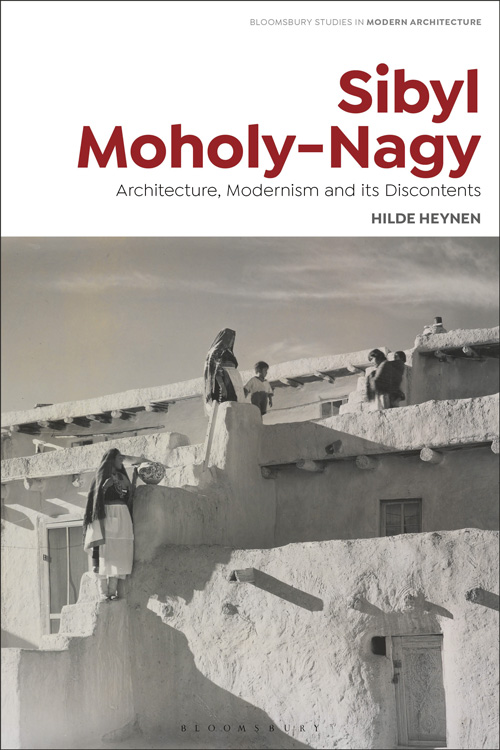
Sibyl Moholy-Nagy:
Architecture, Modernism
and Its Discontents
By Hilde Heynen
London: Bloomsbury
Studies in Modern Architecture, 2019
234 mm x 156 mm
288 pages
US$ 100.00 (hardback),
US$ 31.46 (paperback)
ISBN: 978-1-350094-11-6
A New “Book of the City of Ladies”
VOLUME 4/2019 - Issue 2 [GENDER MATTERS], Pages: 503 - 511 published: 2020-02-12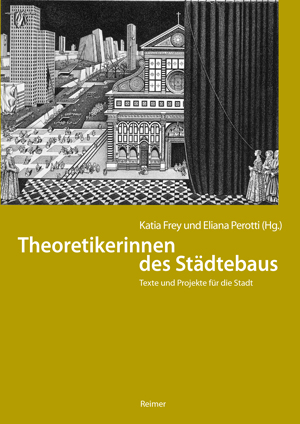
Theoretikerinnen des Städtebaus.
Texte und Projekte für die Stadt,
By Katia Frey and Eliana Perotti (eds.)
Berlin: Reimer, 2015
240 mm x 170 mm
42 b/w illustrations
352 pages
€ 49 (paperback)
ISBN: 978-3-496-01532-1

Frauen blicken auf die Stadt.
Architektinnen, Planerinnen, Reformerinnen. Theoretikerinnen des Städtebaus II,
By Katia Frey and Eliana Perotti (eds.)
Berlin: Reimer, 2019
240 mm x 170 mm
45 b/w illustrations
360 pages
€ 49 (paperback)
ISBN: 978-3-496-01567-3
The Diversity of Women’s Engagement with Modern Architecture and Design: Three Case Studies
VOLUME 4/2019 - Issue 2 [GENDER MATTERS], Pages: 465 - 480 published: 2020-01-31A range of often overlooked ways of engaging with architecture and design have historically offered women from around the world with the means of making a living and of advancing the careers of other women, as well as of encouraging the acceptance of artistic experimentation. These include journalism, retailing, and philanthropy. For instance, Ethel Power edited the influential American shelter magazine House Beautiful from 1923-34. Estrid Ericson founded and ran the Stockholm design shop Svensk Tenn for over half a century; she also designed many of its characteristic products. Gira Sarabhai was instrumental in the establishment of the Calico Museum and then the National Academy of Design, both located in her native Ahmedabad, India, and contributed to the design of the building in which the latter is housed. Writing such achievements back into the history of architecture and design helps provide the foundation for a more inclusive approach to those professions today.
No Architect Is an Island: The Agency-Communality Spectrum and the Construction of Professional Identity in Architecture
VOLUME 4/2019 - Issue 2 [GENDER MATTERS], Pages: 281 - 306 published: 2020-01-17Findings from the 2018 Equity in Architecture Survey demonstrate that architectural professionals tend to describe their work in terms of personal agency rather than communality. This pattern in architectural practitioners’ work orientations is associated with two major obstacles to achieving equity within the architectural profession. First, the practitioners who are most satisfied with their work are typically more communally oriented, suggesting that architecture’s overemphasis on the professional self may limit potential pathways to positive experiences of one’s work. Secondly, women in the profession face significant bias as they embody the stereotypically agentic professional archetypes of the Creative or the Rainmaker, but are also undervalued when they adopt communally-oriented, but lower status, professional personas. We conclude by proposing two parallel strategies intended to improve professional outcomes by addressing the adverse effects of agency-orientation in architectural practice.
The Role of Women in the Culture of Dwelling: Urban Spaces at Play in the Projects of Jacoba Mulder and Marjory Allen, Lady Allen of Hurtwood
VOLUME 4/2019 - Issue 2 [GENDER MATTERS], Pages: 449 - 464 published: 2019-12-18There are many female architects and urban planners who have contributed to the development of disciplines aimed at improving the daily lives and social relations of many citizens throughout the twentieth century, most notably in the design and construction of domestic and urban spaces. The Dutch urban planner Jacoba Mulder and the English landscape architect Marjory Allen, Lady of Hurtwood, did so in the second post-war period in Amsterdam and London, respectively, both engaging in the design for a new habitability of the public space, a space “of the” public that they wanted to make accessible to everyone, especially children and young people. Prominent figures in pioneering experiences, they had the opportunity to practice an interstitial planning capable of realizing safer and more liveable urban spaces. Today, their reinterpretation can inspire interesting insights into contemporary city design and wider general reflections on the culture of dwelling and the design competence of women. A competence that, be it “expert” or “common,” can make public space more habitable for all.
Permitting a Homeless Transition Village: Transactions between the Informal and the Formal
VOLUME 4/2019 - Issue 1 , Pages: 137 - 157 published: 2019-06-07More than three million Americans experience homelessness annually. Emergency shelter capacity is limited while local governments are unable to provide even temporary housing. Informal housing involving interim self-help solutions are now popular adaptive actions for obtaining shelter, despite nonconformance with city codes. Unfortunately, most informal solutions have resulted in objectionable tent cities and squatter campgrounds where the local response has simply been to move the problem around. Our homeless transition village plan prototypes a shelter-first solution using a kit-of-parts
that can be replicated in other communities. Village design reconciles key gaps between informal building practices and formal sector regulations, creating a permittable solution under most city codes. While informality is traditionally associated with the “topography” of unplanned hyper-growth in developing nation economies — and not with design disciplines or advanced economies— our project highlights informality as a mode for effecting new urban solutions within obdurate regulatory environments. Indeed, the informal has emerged as an important design epistemology in advanced market economies given the polarization of their economies and the need for distributive justice.
Reconfronting Sprawl: Still Paved with Good Intentions as Well as Asphalt
VOLUME 4/2019 - Issue 1 , Pages: 187 - 199 published: 2019-06-06This paper, based on the author’s new book The Urban Fix: Resilient Cities in the War against Climate Change, Heat Islands and Overpopulation (2019), culminates over three decades of researching, teaching, and writing on American sprawl. One of the country’s biggest and most familiar problems, it could be described as a conspiracy of good intentions: short-sighted desires to live in nature; traffic safety engineers’ preference for wide thoroughfares; fire marshals’ desire to turn around hook-and-ladder trucks at the end of every cul-de-sac, etc. Over half of American homes are single-family dwellings – 69 million out of a total of 132 million. The fatal flaw is that these positive intentions quickly led to very high energy/carbon/ecological footprints per suburbanite – a challenge that is difficult because of extensive, indelible infrastructure. Densifying arterial strips, inserting transit, redeveloping a walkable, bikeable, mixed-use, and human-scaled urbanity is as urgent as it is essential in the nation’s effort to combat climate change.
The Restoration of the Canada Pavilion at the Venice Biennale
VOLUME 4/2019 - Issue 1 , Pages: 7 - 16 published: 2019-06-06Originally, the design for the Canada Pavilion (1958) was developed by the Milan-based firm BBPR from the willingness to achieve an anti-monumental set up, referring to the teepee and translating and expressing its spirit in a modern architectural system. Our goal for the restoration (2014-18) was therefore to preserve the building with a special attention to various themes concerning restoration and, in fact, different solutions were studied for the many details to be able to respond to all institutional representatives: the Italian Superintendence for Historic Preservation, the National Gallery of Canada, the Venice Biennale and the Municipality of Venice. The relationship between nature and architecture was one of the major issues to consider.
Office for A.T.E. Enterprises, Ahmedabad, India
VOLUME 4/2019 - Issue 1 , Pages: 17 - 30 published: 2019-06-06The new office building of the A.T.E. Group – a cutting-edge engineering group based in the outskirts of Ahmedabad (India) along the Delhi-Ahmedabad highway – works as an extension to its adjacent existing factory. Diversifying from the ordinary existing factory shed scenery, the building uses technological innovation and landscape as key elements to serve both as an aesthetic surface and a performative office space. Through multiple layers of natural cooling techniques embedded in and wrapping around occupied spaces, the corporate office works in partnership with the seasonal and climatic flows. Indoor and outdoor spaces flow into each other as well as both the existing factory and the new office complex are fluidly embedded within the surrounding landscape. With low carbon footprint and minimal use of active energy, the building creates comfortable environmental conditions while countering the local conditions of extreme heat, dryness, and variations in temperature through the day and year.
"Lake of the Mind. A Conversation with Steven Holl"
VOLUME 4/2019 - Issue 1 , Pages: 227 - 231 published: 2019-03-05"Ando and Le Corbusier: Masters of Architecture" Symposium
VOLUME 4/2019 - Issue 1 , Pages: 233 - 236 published: 2019-03-04Housing by People and Work: Design Principles for Favelas Residents in Economies of Commerce and Service
VOLUME 4/2019 - Issue 1 , Pages: 113 - 136 published: 2019-03-04This article proposes a new approach towards the design and planning of social housing destined to residents living in informal settlements of Brazil. It is aimed at restoring the proximity between the labor and domestic functions within the spatial domain of the house. This need emerges from a field research aimed at addressing the spatial logics emplaced by residents in Brazilian favelas. The integration proposed in the article is meant to be achieved with the combined goal of improving the living conditions of the residents, sustaining also their socio-economic development, while promoting also the economy of the city. Graphic guidelines are shown to the reader after a critical analysis of the main systems of housing currently emplaced for unprivileged people.
"FREESPACE" and the Citizen: Stories of Generosity from the Venice Architecture Biennale 2018
VOLUME 4/2019 - Issue 1 , Pages: 237 - 252 published: 2018-10-30Expanding (on) the Core. The QT8 Project in Milan
VOLUME 4/2019 - Issue 1 , Pages: 201 - 221 published: 2019-08-02The Quartiere Sperimentale della Ottava Triennale [Experimental Neighborhood of the Eighth Milan Triennale], located in the northwestern periphery of Milan, survives as a significant chapter in the history of modern house and town planning. It formed part of the fast-moving expansion of the city towards the outskirts during the postwar era and represented a rupture with the past. Encompassing the investigations of those days into the threefold standardization-prefabrication-industrialization, it addressed the cogent issue of housing, while expressing a deep interest in the creation of a new urban sense of spatiality and communality. Advocating the autonomy of the suburbs, as well as their integration into the city, QT8 offered a flexible interpretation of the symbiotic relationship between center and periphery. This paper aims to provide a deeper understanding of how QT8 comprehended the term “core” as able to suggest more than a mere location. In so doing, it discusses its intersections with the broader discussions on the development of the modern city formed in those days, its vision to establish an urban social space at its center, and its ability to inform contemporary debates on the core/periphery dichotomy.
Building Collective Individualities: Residential Pavilions in the Italian Countryside
VOLUME 4/2019 - Issue 1 , Pages: 31 - 46 published: 2019-08-01By bringing the long-neglected subject of the single-family dwelling back into today’s Italian architectural discourse, this text illustrates that the villa can be understood as both a private dwelling and a place where collective individuality is formed. Three residences designed by Malfona Peltrini Architects in the Roman countryside provide a reading of the suburban villa as a pavilion made up of a core surrounded by a shell. The concept of the pavilion emerged as a country house for pleasurable or health-related purposes, but it eventually lost its domestic dimension and was used to describe an isolated, dismantlable structure erected in a public space or a green environment. Aiming at reassessing the pavilion as a twofold architecture, the design featured here links the concept of a private house to that of a public building. By enveloping a central nucleus with a shell, or a portico, a residential pavilion broadens its domestic dimension to incorporate an institutional and collective status, similar to the Palladian villa where the portico was co-opted from sacred or public buildings and lent to the private residence.
Housing the Multitude: Struggling with Impermanence and Singularities
VOLUME 4/2019 - Issue 1 , Pages: 67 - 92 published: 2019-08-01This article seeks to trace a history of Team X’s experimentations on the issue of housing for the great number and more specifically around the theoretical background leading to the question of impermanence and indeterminacy in the architectural process. Through the writings of the Smithsons, Oskar Hansen, or John Voelcker, a theoretical framework will be defined and then put into perspective in a contemporary context. Two case studies will be discussed: Lacaton & Vassal, and Elemental. Connections will be made on the issue of indeterminacy and the concepts of “open structure” and “open aesthetics” will be promoted. These concepts presented here offer an alternative for some other possible formal developments around the question of indeterminacy. We will assess whether the pragmatism of these two contemporary architectural offices allow their proposals, beyond responding to specific situations, to claim the status of a reproducible model, such as one imagined during the 1960s.
Expanding the Field: Virtual Fencing as Responsive Landscape Technology
VOLUME 4/2019 - Issue 1 , Pages: 159 - 185 published: 2019-08-02Livestock is the largest driver of landscape change in the world, depleting land and water resources, negatively impacting biodiversity and contributing significantly to climate change. Though the environmental impact of livestock farming has been well documented, the role of the fence in shaping the form and function of livestock production landscapes deserves more attention. The evolution of fencing technology from wooden post to barbed wire has transformed vast swaths of the American landscape, facilitating agricultural intensification at the cost of ecological fragmentation. Emerging technologies in virtual fencing offer the opportunity to subvert this paradigm by electronically corralling and moving livestock via GPS-enabled collars. This article places the application of virtual fencing technologies within design discourse and outlines untapped opportunities for design intervention. The first section comprises a survey of historical and contemporary fencing technologies, highlighting the economic drivers and ecological consequences of innovation. The second section explores the emergence of sustainable ranching systems and virtual fencing technology. Finally, a speculative design proposal considers the potential of responsive fencing technologies to reformat grazing landscapes for adaptation and ecological production.
Digital Line: Architecture’s Expanding Thread
VOLUME 4/2019 - Issue 1 , Pages: 47 - 65 published: 2019-06-27This article studies the changing role of line in architecture. The paper argues that digital production has led to a subsequent shift of lines as trace, towards lines as “spatialized” thread. This thread is moving away from orthographic and perspective modes of representation through three embedded modes of conception: the digital model, diagram and notation. These new lines have a long and alternative lineage in architectural ideation. The paper explains each mode in turn, indicating the importance of the model as a line in space embedded since the very inception of western architectural discourse; the edifying role of the diagram as a line of operation clarifying architectural ideas; and the new material ground that links notation to fabrication, and continued actualization in the pursuit of new architectural ideas. By expanding the line in architecture, the digital line better connects emerging representational modes to established architectural thinking and opens new ground to further representational discourse.
Politicized Gentrification: The New Urban Renewal Movement in Beijing
VOLUME 4/2019 - Issue 1 , Pages: 93 - 112 published: 2019-06-27In April 2017, the Beijing municipal government enacted a new, three-year urban renewal policy that is aimed to restore and improve the built environment of the 2,435 alleyways located in the historic center of the city. The local implementation, however, has focused on the sealing of doors and windows that led to homes and small businesses for decades. As a result, thousands of businesses that had provided daily services to local residents have shut down, forcing many people to move to other cities. Drawing on archival research and interviews, this article argues that the Beijing municipal government is merely using urban renewal as camouflage for a politically-oriented gentrification project which not only eliminates non-permanent residents, but also deconstructs, as well as reconstructs, “place” at the local level as a means to control social activities and relationships. The result is the creation of a new image of the capital of China, which exhibits the ideas of regularity, singularity, segregation, and authoritarianism.
Collective Creativity in a Geodesign World: The DC-Baltimore Futures Studio
VOLUME 3/2018 - Issue 2 [THE SHARED PROJECT], Pages: 377 - 400 published: 2019-02-12In the spring of 2018, the National Center for Smart Growth (NCSG) invited architects at the University of Maryland to engage a project called PRESTO (Prospects for Regional Sustainability Tomorrow). PRESTO is believed to be the first attempt at addressing the long-term sustainability of the DC-Baltimore region using advanced algorithmic modeling and scenario analysis techniques to examine the impacts of fuel costs, technological advancement, and government regulation. This article highlights contributions of the DC-Baltimore Futures: Designing XL to XS studio as it engaged the multi-disciplinary NCGS team on PRESTO, which is described in this article as a geodesign project. The impact of collective creativity as part of DC-Baltimore Futures studio pedagogy is discussed as one of the many ways that the PRESTO algorithms were tested. The article concludes with reflections on the role and potential of collective creativity in open source modes of geodesign and “senseable” city design.
Fluid Urbanism: How Information Steered Architecture Might Reshape the Dynamics of Civic Dwelling
VOLUME 3/2018 - Issue 2 [THE SHARED PROJECT], Pages: 401 - 426 published: 2018-12-20This paper speculates on how new forms of dwelling might be re-conceived as more nimble, flexible components: ones capable of deploying to different sites and atmospheres, while simultaneously providing more broadly distributed access to amenities that otherwise remain limited to the privileged few. Specifically, it examines the notion of a mobile dwelling architecture that could be deployed to various sites across the city - each site being characterized by particular “niche” offerings. Here, rather than dwelling units being considered as static entities within the urban fabric, they are re-considered as nimble, deployable agents - able to relocate to different sites and settings in accordance with different parameters that are customized through individual cost-benefit analyses and feedback dynamics. Accordingly, over time, bottom-up, self-organizing “niches” of fit inhabitation emerge. The paper associates this kind of designed environment with the dynamics of complex adaptive systems - where emergent global features arise from the bottom-up. Here, a kind of “swarm” urbanism is deployed: one adjusting over time in response to atmospheric variables.
Crowdsourcing + Shared Architecture
VOLUME 3/2018 - Issue 2 [THE SHARED PROJECT], Pages: 363 - 373 published: 2018-12-19This paper describes a participatory development strategy that leverages the cooperative nature of a sharing economy. Three case studies will be explored that provide unique strategies for empowering community. These crowdsourced projects pool resources and expertise in order to design and build projects that resist gentrification, stimulate investment, and build community. Residents utilize the participatory actions of establishing a pro forma, acquiring land, securing financing, selecting professional engineers and contractors, and ultimately constructing the project all as larger components of community building. The models of community development presented here offer an alternative to the traditional designer-client dichotomy and allow the once-clear boundary between architect and client to be redrawn. Also, by sharing resources, community members are able to become active participants in their built environment.
The Engaged Project: Representation, Dissent, and the Architecture of Public Space
VOLUME 3/2018 - Issue 2 [THE SHARED PROJECT], Pages: 341 - 362 published: 2018-12-20Vandalism is an alternative form of design narrative, a subversive practice of reading architecture and urban systems, and a fundamental way key voices can be heard. Architects, city planners, officials and the public should value such reads as constructive engagement enriching the life of a built work. Architecture usually results from elaborate systems of power, capital, and privilege - though its presence affects everyone in the city. In the periphery of public space, dynamic alternative practices emerge that communicate and critique. Vandalism, especially in areas of contested “ownership” in public space, is an architectural counterpoint, a dissent available to people without conventional means of power. It is intrinsically linked to the pedestrian experience of cities, and therefore opens reconsideration of walking as knowing, especially in an urban terrain vague [empty lot]. Technologies of sharing allow us to broadcast transgressions, track goings on, exploit urban problems for artistic gain, and conduct vandalism in public space. Focusing attention on a public farm building designed collaboratively within an urban park will frame broader discussion of these complex relationships at work, specifically considering vandalism as a form of engagement.
Using Digital Data for Office Design. "The Case Study of the Agnelli Foundation"
VOLUME 3/2018 - Issue 2 [THE SHARED PROJECT], Pages: 315 - 325 published: 2018-11-28In the nineties, it was widely assumed that, because of the internet and widespread connectivity, the importance of physical space would be greatly reduced. Many prophecies at the time dealt with the “death” of distance, of cities and of offices, among others. While such predictions have not materialized so far, technology is nonetheless having an effect on how we use physical space. In particular, office spaces are undergoing a profound transformation. In this article, we review a recent project from Massachusetts Institute of Technology’s (MIT) Senseable City Lab, which used the analysis of digital data to better understand the use of office space and scientific collaboration on the MIT campus. We then show how some of these preliminary findings can be used in the design of the co-working space at the Agnelli Foundation in Turin, Italy - and how digital data can then provide real-time monitoring of built spaces.


